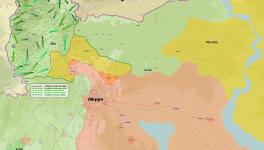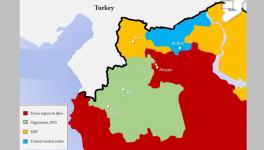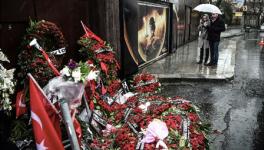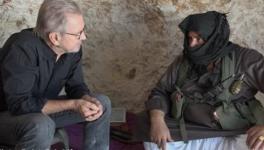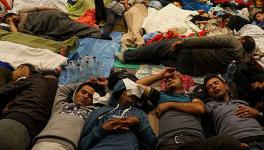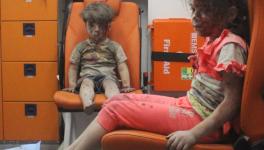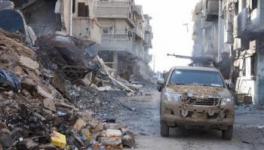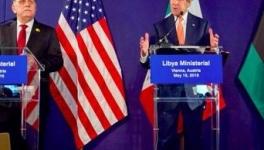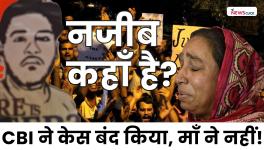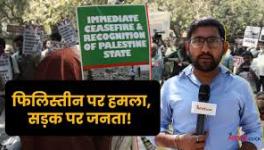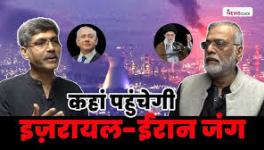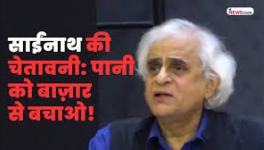Ten days into the uprising in Benghazi, Libya, the United Nations’ Human Rights Council established the International Commission of Inquiry on Libya. The purpose of the Commission was to “investigate all alleged violations of international human rights law in Libya.” The broad agenda was to establish the facts of the violations and crimes and to take such actions as to hold the identified perpetrators accountable. On June 15, the Commission presented its first report to the Council. This report was provisional, since the conflict was still ongoing and access to the country was minimal. The June report was no more conclusive than the work of the human rights non-governmental organizations (such as Amnesty International and Human Rights Watch). In some instances, the work of investigators for these NGOs (such as Donatella Rovera of Amnesty) was of higher quality than that of the Commission.
Due to the uncompleted war and then the unsettled security state in the country in its aftermath, the Commission did not return to the field till October 2011, and did not begin any real investigation before December 2011. On March 2, 2012, the Commission finally produced a two hundred-page document that was presented to the Human Rights Council in Geneva. Little fanfare greeted this report’s publication, and the HRC’s deliberation on it was equally restrained.
Nonetheless, the report is fairly revelatory, making two important points: first, that all sides on the ground committed war crimes with no mention at all of a potential genocide conducted by the Qaddafi forces; second, that there remains a distinct lack of clarity regarding potential NATO war crimes. Not enough can be made of these two points. They strongly inferthat the rush to a NATO “humanitarian intervention” might have been made on exaggerated evidence, and that NATO’s own military intervention might have been less than “humanitarian” in its effects.
It is precisely because of a lack of accountability by NATO that there is hesitancy in the United Nations Security Council for a strong resolution on Syria. “Because of the Libyan experience,” the Indian Ambassador to the UN Hardeep Singh Puri told me in February, “other members of the Security Council, such as China and Russia, will not hesitate in exercising a veto if a resolution – and this is a big if – contains actions under Chapter 7 of the UN Charter, which permits the use of force and punitive and coercive measures.”
Crimes Against Humanity.
The Libyan uprising began on February 15, 2011. By February 22, the UN Human Rights Chief Navi Pillay claimed that two hundred and fifty people had been killed in Libya, “although the actual numbers are difficult to verify.” Nonetheless, Pillay pointed to “widespread and systematic attacks against the civilian population” which “may amount to crimes against humanity.” Pillay channeled the Deputy Permanent Representative to the UN from Libya, Ibrahim Dabbashi, who had defected to the rebellion and claimed, “Qaddafi had started the genocide against the Libyan people.” Very soon world leaders used the two concepts interchangeably, “genocide” and “crimes against humanity.” These concepts created a mood that Qaddafi’s forces were either already indiscriminately killing vast numbers of people, or that they were poised for a massacre of Rwanda proportions.
Courageous work by Amnesty International and Human Rights Watch last year, then much later the 2012 report from the UN belies this judgment, (as does my forthcoming book
Arab Spring, Libyan Winter, AK Press), which goes through the day-by-day record and show two things: that both sides used excessive violence and that the rebels seemed to have the upper hand for much of the conflict, with Qaddafi’s forces able to recapture cities, but unable to hold them.
The UN report is much more focused on the question of crimes committed on the ground. This is the kind of forensic evidence in the report:
(1) In the military base and detention camp of Al Qalaa. “Witnesses, together with the local prosecutor, uncovered the bodies of 43 men and boys, blindfolded and with their hands tied behind their backs.” Qaddafi forces had shot them. Going over many of these kinds of incidents, and of indiscriminate firing of heavy artillery into cities, the UN Report notes that these amount to a war crime or a crime against humanity.
(2) “Over a dozen Qadhafi soldiers were reportedly shot in the back of the head bythuwar [rebel fighters] around 22-23 February 2011 in a village between Al Bayda and Darnah. This is corroborated by mobile phone footage.” After an exhaustive listing of the many such incidents, and of the use of heavy artillery against cities notably Sirte, the UN report suggests the preponderance of evidence of the war crime of murder or crimes against humanity.
There is no mention of genocide in the Report, and none of any organized civilian massacre. This is significant because UN Resolution 1973, which authorized the NATO war, was premised on the “the widespread and systematic attacks currently taking place in the Libyan Arab Jamahiriya against the civilian population” which “may amount to crimes against humanity.” There was no mention in Resolution 1973 of the disproportionate violence of the thuwar against the pro-Qaddafi population (already reported by al-jazeera by February 19), a fact that might have given pause to the UN as it allowed NATO to enter the conflict on the rebels’ behalf. NATO’s partisan bombardment allowed the rebels to seize the country faster than they might have had in a more protracted war, but it also allowed them carte blanche to continue with their own crimes against humanity.
With NATO backing, it was clear that no one was going to either properly investigate the rebel behavior, and no-one was going to allow for a criminal prosecution of those crimes against humanity. Violence of this kind by one’s allies is never to be investigated as the Allies found out after World War 2 when there was no assessment of the criminal firebombing of, for example, Dresden. No wonder that the UN Report notes that the Commissioners are “deeply concerned that no independent investigation or prosecution appear to have been instigated into killings committed by thuwar.” None is likely. There are now over eight thousand pro-Qaddafi fighters in Libyan prisons. They have no charges framed against them. Many have been tortured, and several have died (including Halah al-Misrati, the Qaddafi era newscaster).
The section of the UN report on the town of Tawergha is most startling. The thirty thousand residents of the town were removed by the Misratan thuwar. The general sentiment among the Misratan thuwarwas that the Tawerghans were given preferential treatment by the Qaddafi regime, a claim disputed by the Tawerghans. The road between Misrata and Tawergha was lined with slogans such as “the brigade for purging slaves, black skin,” indicating the racist cleansing of the town. The section on Tawergha takes up twenty pages of the report. It is chilling reading. Tawerghans told the Commission “that during ‘interrogations’ they were beaten, had hot wax poured in their ears and were told to confess to committing rape in Misrata. The Commission was told that one man had diesel poured on to his back which was then set alight; the same man was held in shackles for 12 days.” This goes on and on. The death count is unclear. The refugees are badly treated as they go to Benghazi and Tripoli.
To the Commission, the attacks against Tawerghans during the war “constitute a war crime” and those that have taken place since “violate international human rights law” and a “crime against humanity.” Because of the “current difficulties faced by the Libyan Government,” the Commission concludes, it is unlikely that the government will be able to bring justice for the Tawerghans and to undermine the “culture of impunity that characterizes the attacks.”
NATO’s Crimes.
For the past several months, the Russians have asked for a proper investigation through the UN Security Council of the NATO bombardment of Libya. “There is great reluctance to undertake it,” the Indian Ambassador to the UN told me. When the NATO states in the Security Council wanted to clamor for war in February-March 2011, they held discussions about Libya in an open session. After Resolution 1973 and since the war ended, the NATO states have only allowed discussion about Libya in a closed session. When Navi Pillay came to talk about the UN Report, her remarks were not for the public.
Indeed, when it became clear to NATO that the UN Commission wished to investigate NATO’s role in the Libyan war, Brussels balked. On February 15, 2012, NATO’s Legal Adviser Peter Olson wrote a strong letter to the Chair of the Commission. NATO accepted that the Qaddafi regime “committed serious violations of international law,” which led to the Security Council Resolution 1973. What was not acceptable was any mention of NATO’s “violations” during the conflict,
“We would be concerned, however, if ‘NATO incidents’ were included in the Commission’s report as on a par with those which the Commission may ultimately conclude did violate law or constitute crimes. We note in this regard that the Commission’s mandate is to discuss ‘the facts and circumstance of….violations [of law] and…crimes perpetrated.’ We would accordingly request that, in the event the Commission elects to include a discussion of NATO actions in Libya, its report clearly state that NATO did not deliberately target civilians and did not commit war crimes in Libya.”
To its credit, the Commission did discuss the NATO “incidents.” However, there were some factual problems. The Commission claimed that NATO flew 17,939 armed sorties in Libya. NATO says that it flew “24,200 sorties, including over 9,000 strike sorties.” What the gap between the two numbers might tell us is not explored in the report or in the press discussion subsequently. The Commission points out that NATO did strike several civilian areas (such as Majer, Bani Walid, Sirte, Surman, Souq al-Juma) as well as areas that NATO claims were “command and control nodes.” The Commission found no “evidence of such activity” in these “nodes.” NATO contested both the civilian deaths and the Commission’s doubts about these “nodes.” Because NATO would not fully cooperate with the Commission, the investigation was “unable to determine, for lack of sufficient information, whether these strikes were based on incorrect or outdated intelligence and, therefore, whether they were consistent with NATO’s objective to take all necessary precautions to avoid civilian casualties entirely.”
Three days after the report was released in the Human Rights Council, NATO’s chief Anders Fogh Rasmussen denied its anodyne conclusions regarding NATO. And then, for added effect, Rasmussen said that he was pleased with the report’s finding that NATO “had conducted a highly precise campaign with a demonstrable determination to avoid civilian casualties.” There is no such clear finding. The report is far more circumspect, worrying about the lack of information to make any clear statement about NATO’s bombing runs. NATO had conducted its own inquiry, but did not turn over its report or raw data to the UN Commission.
On March 12, UN Secretary General Ban Ki-moon went to the UN Security Council and stated that he was “deeply concerned” about human rights abuses in Libya, including the more than eight thousand prisoners held in jails with no judicial process (including Saif al-Islam Qaddafi, who should have been transferred to the Hague by NATO’s logic). Few dispute this part of the report. The tension in the Security Council is over the section on NATO. On March 9, Maria Khodynskaya-Golenishcheva of the Russian Mission to the UN in Geneva noted that the UN report omitted to explore the civilian deaths caused by NATO. “In our view,” she said, “during the NATO campaign many violations of the standard of international law and human rights were committed, including the most important right, the right to life.” On March 12, Russia’s Foreign Minister Sergei Lavrov accused NATO of “massive bombings” in Libya. It was in response to Lavrov’s comment that Ban’s spokesperson Martin Nesirky pointed out that Ban accepts “the report’s overall finding that NATO did not deliberately target civilians in Libya.”
NATO is loath to permit a full investigation. It believes that it has the upper hand, with Libya showing how the UN will now use NATO as its military arm (or else how the NATO states will be able to use the UN for its exercise of power). In the Security Council, NATO’s Rasmussen notes, “Brazil, China, India and Russia consciously stepped aside to allow the UN Security Council to act” and they “did not put their military might at the disposal of the coalition that emerged.” NATO has no challenger. This is why the Russians and the Chinese are unwilling to allow any UN resolution that hints at military intervention. They fear the Pandora’s box opened by Resolution 1973.
Vijay Prashad’s new book, Arab Spring, Libyan Winter (AK Press) will be out in late March. On March 25, he will be speaking at the plenary panel of the United National Anti-War Coalition National Conference in Stamford, CT, alongside Bill McKibben, Richard Wolff and Nada Khader on “Global Economic Meltdown, Warming and War.”










